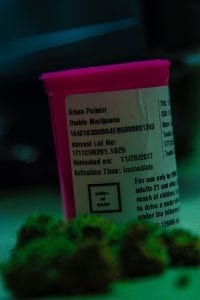Measure to let VA docs help vets get medical marijuana withdrawn after agency objects
https://www.washingtontimes.com/news/2019/jun/22/marijuana-measure-widening-access-for-veterans-wit/
Medical marijuana legislation widening access for military veterans was shelved Friday in the face of federal opposition.
Rep. Earl Blumenauer, Oregon Democrat, withdrew an amendment from an annual spending bill that would have allowed Department of Veterans Affairs doctors to recommend pot to patients in states that have legalized the medicinal use of marijuana.
Explaining his decision on the House floor, Mr. Blumenauer said the VA “has not been as helpful as it should be” in terms of providing veterans with greater access to medical marijuana, which is prohibited under federal law but legal in most states.
“All of a sudden the VA has decided, well, they would be putting their doctors at risk,” said Mr. Blumenauer, the founder and co-chair of the Congressional Cannabis Caucus.
“I hope that we’ll be able to work together to fix this little quirk to make sure that VA doctors can do what doctors everywhere do in states where medical cannabis is legal and be able to work with their patients,” he said.
The VA did not immediately return a request for comment over the weekend.
Thirty-three states have legalized medical marijuana to varying degrees, providing patients in most of the country with a route for obtaining and using pot in spite of its status as a Schedule 1 drug federally prohibited under the U.S. Controlled Substances Act.
Addressing lawmakers on Capitol Hill last month, a top VA official said the agency would look for the U.S. Drug Enforcement Administration for guidance as long as pot remains on the government’s list of controlled substances.
The DEA “advised VA that no provision of the Controlled Substances Act would be exempt from criminal sanctions as a VA physician who acts with intent to provide a patient with means to obtain marijuana,” testified Dr. Keita Franklin, national director of suicide prevention for the department’s Office of Mental Health and Suicide Prevention.
Mr. Blumenauer’s amendment would have prohibited the VA from “interfering with a veteran’s participation in a state medical cannabis program, denying a veteran who participates in a state medical cannabis program from being denied VA services and interfering with the ability of VA health care providers to recommend participation in state medical cannabis programs.”
“The VA ought to give their patients, our veterans, the same consideration to be able to have these conversations with the doctors who know them best,” he said prior to withdrawing the amendment.
Another measure preventing the Department of Justice from using federal funds to enforce marijuana prohibition advanced in the House of Representatives earlier this week, meanwhile. Co-sponsored by Mr. Blumenauer, the amendment was agreed by a vote of 267-165 and slated to be included on the full appropriations bill funding the Justice Department’s budget for the next fiscal year.
“This has been a very important week in the evolution of the federal policy to end the failed policy of prohibition on cannabis,” he said Friday. “This is remarkable progress that we have seen, but it is just an effort by Congress to catch up to where the rest of the American public is.
Filed under: General Problems | 2 Comments »



















 war stories to tell. As a Columbia University trained writing consultant Jim has worked closely with writers of all levels of skill to help them find and refine their voices. Jim is a writer, editor, author and medical assistant with over 20 years of experience in healthcare. He’s spent over two decades in clinical care and research at some of New York’s biggest health institutions doing hands-on nursing, education and advocacy for rare disease patients.
war stories to tell. As a Columbia University trained writing consultant Jim has worked closely with writers of all levels of skill to help them find and refine their voices. Jim is a writer, editor, author and medical assistant with over 20 years of experience in healthcare. He’s spent over two decades in clinical care and research at some of New York’s biggest health institutions doing hands-on nursing, education and advocacy for rare disease patients.




